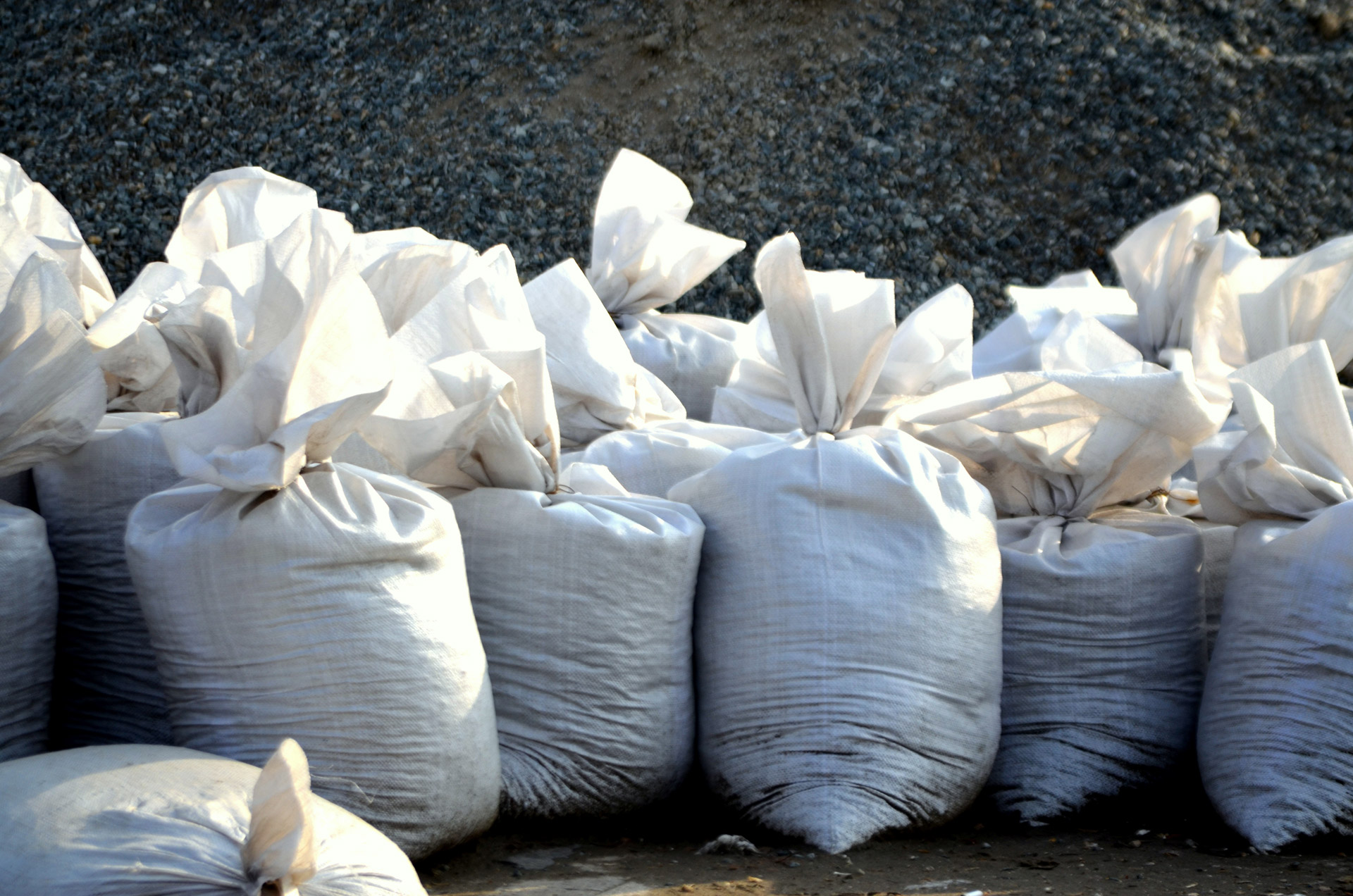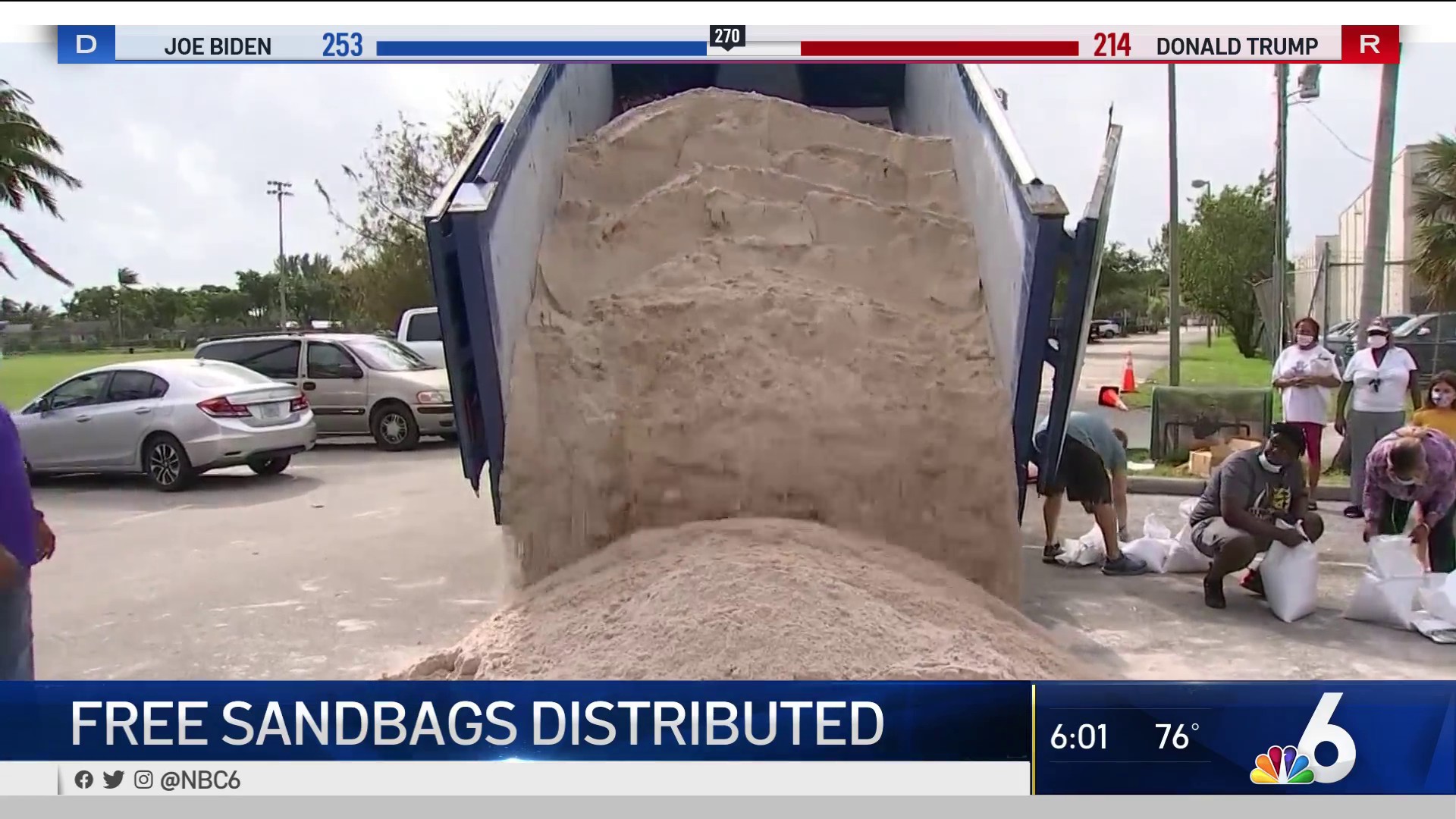Tropical Depression Eta was forecast to become a tropical storm again on Saturday as it moved over the Caribbean Sea and the U.S. National Hurricane Center issued tropical storm watches for the northwestern Bahamas, southern Florida and the Florida Keys.
The center of Eta was expected to approach the Cayman Islands Saturday, be near Cuba Saturday night and Sunday, and approach the Florida Keys or south Florida late Sunday.
Tropical Depression Eta was centered 190 miles (305 kilometers) west-southwest of Grand Cayman early Saturday, according to the National Hurricane Center's latest update. It was moving east-northeast at 13 mph (21 kph) and had maximum sustained winds of 35 mph (55 kph).
A Tropical Storm Watch is now in effect for all of South Florida. Parts or all of this watch will be upgraded to a warning tonight based on the exact forecast track. We also have a Flood Watch (6”+) and Wind Advisory (35 mph gusts) for Miami-Dade & Broward counties. Waves of rain will spiral through between now and Tuesday, and winds could top out at 65 mph near the center of the storm Sunday night into Monday.
The storm will approach from the southeast and make that sharp turn and streak west across South Florida. The exact spot that turn happens will determine who sees a direct hit from a tropical storm and who is on the dirty side of the storm, which will bring the spiral bands of rain & wind, some brief storm surge and even isolated tornadoes.
Right now, the central track would be a line right across the Keys. The northern-most track would be a storm that crosses over Miami. The southern-most track would bring the storm south of Key West.
All three scenarios put most of South Florida in either a direct impact or dirty-side conditions Sunday and Monday. It may take until Monday evening to see the winds begin to subside.
WEATHER
Back in Central America, searchers in Guatemala dug through mud and debris looking for an estimated 100 people believed buried by a massive, rain-fueled landslide, as the remnants of Hurricane Eta strengthened early Saturday as the storm churned toward Cuba.
Eta reached the region as a Category 4 hurricane Tuesday before weakening into a tropical depression. Authorities from Panama to Mexico were still surveying the damages from flooding and landslides following days of torrential rains; the confirmed death toll was in the dozens and expected to rise.
Stay up to date with NBC 6 First Alert Weather and South Florida's most powerful radar First Alert Doppler 6000 by downloading the NBC 6 app for iOS or Android.
On Friday, search teams in Guatemalan pulled the first bodies from a landslide in San Cristobal Verapaz, but the work was slow and help was trickling in. Teams first had to overcome multiple landslides and deep mud just to reach the site where officials have estimated some 150 homes were devastated.
In neighboring Honduras, 68-year-old María Elena Mejía Guadron died when the brown waters of the Chamelecon river poured into San Pedro Sula’s Planeta neighborhood before dawn Thursday.
Mirian Esperanza Nájera Mejía had fled her home in the dark with her two children and Mejía, her mother. But while she held tight to her children, the current swept away Mejía.
Nájera continued searching desperately for her mother Friday morning. But Mejía’s body was recovered later and taken to the morgue where her relatives identified her.
“When the flooding started, the whole family was leaving the house,” said family friend Nery Solis. “Mirian had her two children and suddenly the current grabbed them and she wasn’t able to get her mom.”
The family transported Mejía’s body to the western city of Copan Friday. Her burial was scheduled for Saturday.
In southern Mexico, across the border from Guatemala, 19 people died as heavy rains attributed to Eta caused mudslides and swelled streams and rivers, according to Chiapas state civil defense official Elías Morales Rodríguez.
The worst incident in Mexico occurred in the mountain township of Chenalho, where 10 people were swept away by a rain-swollen stream; their bodies were later found downstream. Mexico's National Meteorological Service said Eta's “broad circulation is causing intense to torrential rains on the Yucatan peninsula and in southeastern Mexico.”
But the massive slide in Guatemala's central mountains threatened to double Central America's reported death toll in one remote community.
Late Friday, army spokesman Rubén Tellez said soldiers and community members had recovered the first three bodies. Hundreds of tons of mud, rock and debris entombed others.
Rescue teams struggled for hours Friday to reach the site from two different approaches. Smaller landslides blocked highways and decimated the dirt road leading to the community of Queja at the base of the slide. The indigenous community of about 1,200 residents consisted of simple homes of wood and tin roofs clinging to the mountainside.
Hurricane Eta’s arrival in northeast Nicaragua followed days of drenching rain as it crawled toward shore. Its slow, meandering path north through Honduras pushed rivers over their banks and pouring into neighborhoods where families were forced onto rooftops to wait for rescue.
The Honduran government estimates more than 1.6 million have been affected. It said rescues were happening Friday in San Pedro Sula and La Lima, but the need was great and resources limited.
The U.S. State Department said in a statement Friday that four U.S. helicopters from the Soto Cano Air Base near Tegucigalpa had flown to San Pedro Sula to participate in rescue operations. U.S. helicopters were also assisting in Panama where authorities confirmed five deaths in the western province of Chiriqui, which borders Costa Rica.



